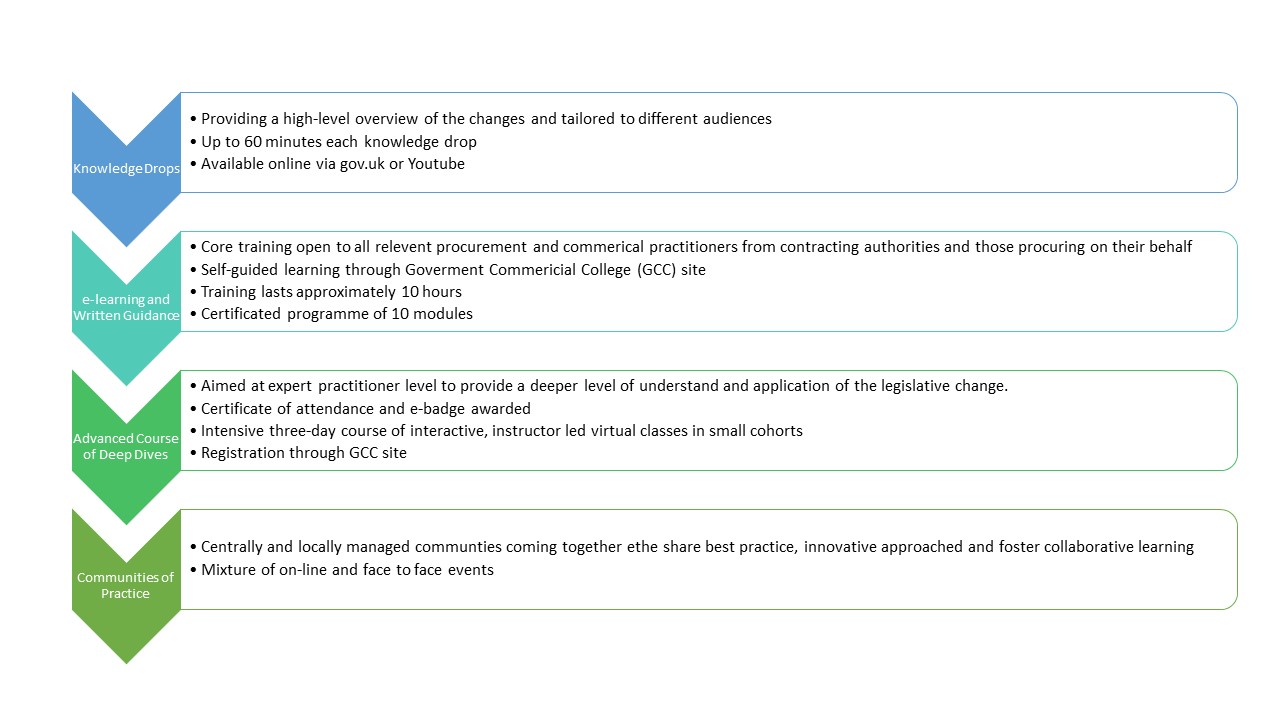With the Procurement Bill’s implementation fast approaching, how can Local Authorities start to prepare themselves for the new regime? Working in collaboration with the CPO Advisory Forum, we have highlighted the four key areas council’s need to be considering at this stage.
Introduction
The Procurement Bill started its journey into law in May 2022 with the first reading taking place in the House of Lords. It became necessary to create this new legal framework following with UK’s exit from the European Union in January 2020.
The bill seeks to reform the UK’s public procurement regime to create a fairer and more transparent system. It also aims to support business by making public procurement more accessible to small businesses in addition to voluntary, charitable, and social enterprises, by enabling them to compete for public contracts.
The Cabinet Office has confirmed a provisional go-live date of October 2024. Similar to the introduction of the Public Contract Regulations 2015, the Bill’s implementation is likely to be completed in phases with learning and development offered to both buyers and suppliers to support a smooth transition and implementation of the Bill.
With a go live date around 12 months away its an ideal time for Local Authorities to start preparing themselves for the new regime by considering four main areas: Governance, People & Learning, Systems, and Implementation.
1. Governance
Policies and processes are key to procurement in order to ensure a smooth experience for both buyers and suppliers. A solid procurement framework can help reduce cost, aid with compliance and ultimately allows procurement teams to add value where required.
Standing Orders and Contract Procedure Rules may need to be updated to reflect the new requirements and we know in the world of Local Authorities this is no easy or quick task.
2. People & Learning
With any system change there needs to be a period of learning for people and time allowed for change to embed across the organisation.
Procurement is everyone’s business, and its likely Local Authorities will need to develop their own internal programme to raise awareness for those staff outside of the procurement team.
To aid with this, the government are creating a range of Learning & Development opportunities. These opportunities are pitched at varying levels and the majority can be completed at a time to suit the learner.
These learning and development offer from government offer 3 learner pathways dependent on the knowledge level the individual requires for their role.

Image: Getting Ready for the New Procurement Act. Government Guidance Note updated 28 February 2023.

3. Systems
The government outlined a number of proposals to improve transparency of UK public contracts and spending within the ‘Transforming Public Procurement – Our Transparency Ambition’ paper. Local authorities should consider their readiness to meet the new data requirements including where data currently sits in your existing procurement systems and how it needs to be used in the future.
As mentioned in the paper, there are still a number of initiatives to come and more are expected to be developed as the new bill is embedded into day-to-day practice.
One of the biggest changes is the requirements to publish more transparency notices throughout the procurement cycle than have previously been required. Although the impact is unknown at present it appears that additional pressures fall on procurement teams.
The governments ambition is to be able to plug directly into the systems used by procurement teams to conduct their business. In order to take full benefit from this we need to ensure the data is in the right place to start with.
The following graphic highlights the potential notices that may need to be published by authorities as part of their procurement cycle.

For a detailed breakdown of each notice, you can download this information in full: Procurement Bill: What notices should I consider? (oxygen-finance.com)
4. Implementation
The final and possibly the most important consideration is implementation and transition to the new regime. Its highly recommended that Local Authorities plan for the new regime as early as possible to make the transition as smooth as it can be for all parties.
It has been suggested in the government’s brief that it will be highly beneficial for Local Authorities to look at their procurement pipeline for the next 18 months to aid a successful transition. This will allow the organisation to continue procuring as usual and plan accordingly, so no issues arrive when the bill comes into effect.
By planning early you can ensure training and communication is rolled out in a timely manner to both internal and external stakeholders and ultimately reduce the risk of miscommunication or negative effects on a procurement.
Summary
It comes as no surprise that leaving the European Union would have an impact on Procurement and government has taken the opportunity for a much-needed overhaul. Now is the time for organisations to have a period of review, to familiarise themselves with the new ways of working, the transparency requirements and the relevant regulations that will come into play.
People and systems are key, an organisation can create solid foundations by reviewing their processes and policies, investing time into procurement teams to further improve procurement by having the right data, in the right place to aid with automation and publication requirements.
Download: Procurement Bill: What notices should I consider? (oxygen-finance.com)




